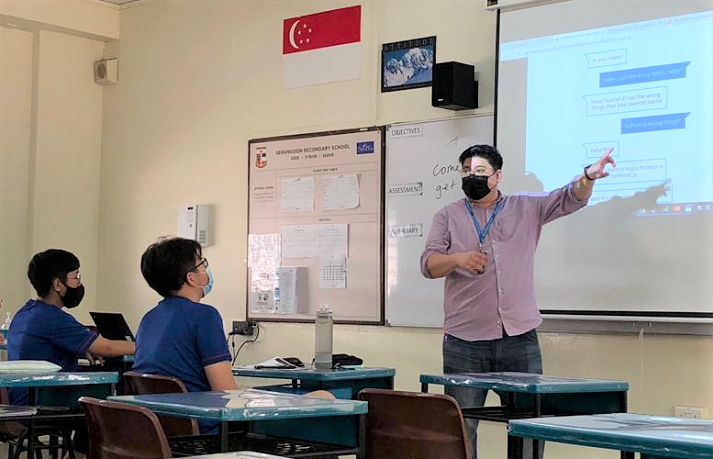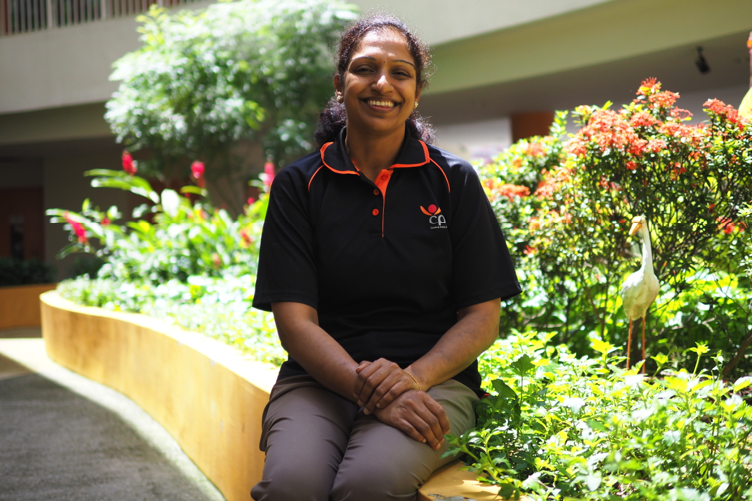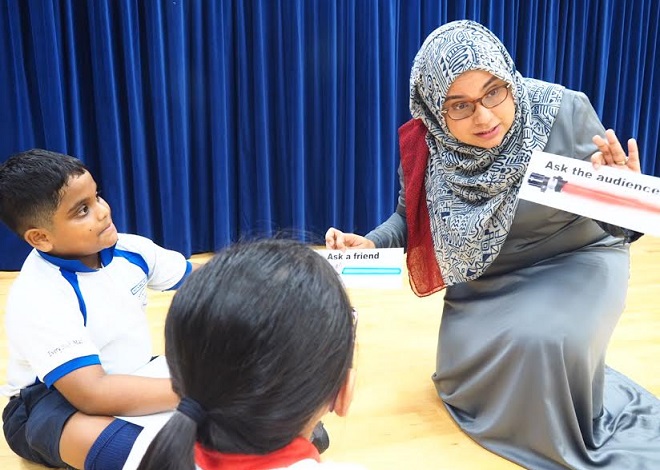Michael Francis Chow is one of a new crop of teachers trained to deliver the Ministry of Education’s revised Character and Citizenship Education curriculum, which is being progressively rolled out to schools from this year. The Serangoon Secondary School teacher, who has been teaching Humanities for 13 years, talks to Schoolbag about the experience after conducting a few months of lessons.
You’re a newly minted Specialised CCE Teacher. Tell us more about this role.
A Specialised CCE teacher (SCT) is one who is trained to enhance the teaching of Character and Citizenship Education (CCE), to help our students better understand themselves and others, and broadly guide them in decision-making in life. I also mentor the other form teachers in my school as they familiarise themselves with the newly revised CCE syllabus for teaching it to their respective classes.
Please share more about the SCT training and enhancements to the syllabus.
The syllabus covers contemporary issues related to mental health and cyber wellness, and also tackles evergreen issues like race, gender and equality in the Singapore context in greater depth, with comparisons to what is happening in other parts of the world.
A big part of our week-long training by MOE went into learning how to facilitate discussions on these contemporary issues. We use a lot of tools, like getting students to group themselves according to the opinion they have on an issue, so they can see the range of perspectives and where everyone else stands, and help students acknowledge and respect people who have diverse views.
Another is having students write their fears about a topic on a piece of paper, putting them anonymously into a bag, and having the teacher take them out and respond to them as a class. This helps students feel listened to and affirmed, without the potential awkwardness of speaking up about their insecurities in front of the class and feel that the safe in sharing their views and feelings.
During the training, we also spent a lot of time learning about the Context-Dimension Framework. This framework helps us ask questions to navigate complex issues. Students are guided to think from micro and macro perspectives, as well as shift from uni-dimensional to multi-dimensional angles around an issue. Take racism, for instance. We start by understanding what a student thinks of racism, and why they feel that way. Then we ask them what they think about Singaporeans’ view of racism, and maybe what another nationality may think of it. The idea is to help them look at the same issue from different perspectives and make informed decisions.
When different viewpoints come up in class, I’d say, “Let’s clarify: why do you feel this way? Is it a fair view?” It is about striving to understand one another, and forming opinions that are reasoned and values-based.
How are sensitive issues discussed differently from before?
Previously, as teachers, we treaded gently when it came to sensitive topics. But they are hard to avoid now, because students feed their curiosity through various sources of information and bring up heavier questions to class. They read about gun violence in the US and ask “’Cher, the shootings that happened, why did they happen?” They look at social media posts and ask, “Why is what this person is saying, considered racism?”, and, “Is casual racism okay?” So we look at all of this from multiple dimensions, going beyond what happens in Singapore to what is happening in other countries.
Let’s talk specifically about mental health, which is a new topic within CCE. What does the syllabus cover?
Mental health is not entirely new within CCE as social-emotional learning was already a key aspect within our previous curriculum. Now, the curriculum has been enhanced to help students recognise common mental illnesses, as well as to know when and how to seek help for themselves and for others.
We teach them how to recognise and manage their emotions and automatic negative thoughts. Importantly, we emphasise that mental health is a continuum, and we now place a lot of emphasis on strengthening their mental well-being and building their resilience.
Mental health is also not taught in isolation. We integrate it into other CCE lessons, such as cyber wellness, where students learn to manage social comparisons and form a healthy self-identity. We bring it up when conducting what we call SDEs or student development experiences in schools, such as CCAs. We want students to see that mental health is an important part of their lives, and is something they can build up and act on. It’s not just a lesson.
What are some help-seeking skills that students are taught?
To begin, students learn that different people have different experiences and tipping points, so there is no one prescribed moment to seek help. One student could feel distressed or bullied when left out of a group discussion, but another student may not perceive the group’s actions in the same way.
When in distress, students at our school, who are called our “Serangoon StaRs”, are encouraged to look to the support structure where they are in the centre, circled by Student Leaders and their own teachers, followed by other teachers and staff of the school. Specialised CCE teachers are found among the form teachers.

A diagram showing Serangoon Secondary’s structure of support which puts its students, known as Serangoon StaRs, at the centre of a network of care and enablement.
How have your students been responding to this new way of conducting your CCE classes?
The lessons have drawn out some surprising issues. When teaching a mental health lesson on stress and distress, I presented a series of scenarios that students may face, from being left out of certain groups in school, to family issues at home, to being bullied. They were intended to be in increasing order of pressure, and the idea was to have students voice out which of them might be a breaking point for them.
I thought the students would progress through the different scenarios in sequence. But no, some of them jumped from one point to another, in no particular order, indicating that they have experienced distress across all the scenarios and that different situations affect individuals differently. One student said after experiencing these negative situations enough times, “you become numb to it”.
As a CCE teacher, statements like these set my alarm bells ringing. Clearly these students are going through more than I thought. So I started looking out for them more, and tried to understand and support them through their troubles. I’d say that’s another role of a Specialised CCE Teacher: to draw such concerns out. You need that sense of observation.
How else do you identify students who may need help?
We have a strong relationship so sometimes they come to me with their problems. They will approach me after class and say “’Cher, I need to talk.” Some have broken down while telling me the kinds of situations they are facing.
As Specialised CCE teachers, we also learned to use technology for facilitation. There is an app we use in class called Padlet, like a digital message board, that helps give students a voice, especially those who feel shy and don’t really like to speak much. We also use apps like Mentimeter and Kahoot for polls and greater interaction. During one session, I asked, “Is there something we can improve in the class”, and one boy wrote “stop bullying me”. It turned out to be a cry for help, addressed to others in his class. This was a very, very quiet boy. We would not have known otherwise.
Sounds like a lot of work for the head and the heart. How do you prepare for your lessons?
Most of them are based on lesson plans and good teaching resources provided by MOE’s Student Development Curriculum Division. As CCE teachers, we have to internalise the lesson so it is authentic. You also have to know your students well, and establish that trust with them, so the lesson can come alive. This is why form teachers are the ones who teach CCE.
But it can be draining. I once prepared for a lesson over a weekend, weaving in personal stories I wanted to share, and on Monday, went to my Head of Department and said, “I am emotionally overwhelmed.”
I am one of those teachers who also likes sharing my experiences and struggles; I notice that if I open up about my own challenges, my students will in turn open up to me as well. And if they see that their teacher had gone through certain challenges as well, they may feel less alone, and more inspired to seek help and overcome their own obstacles.






